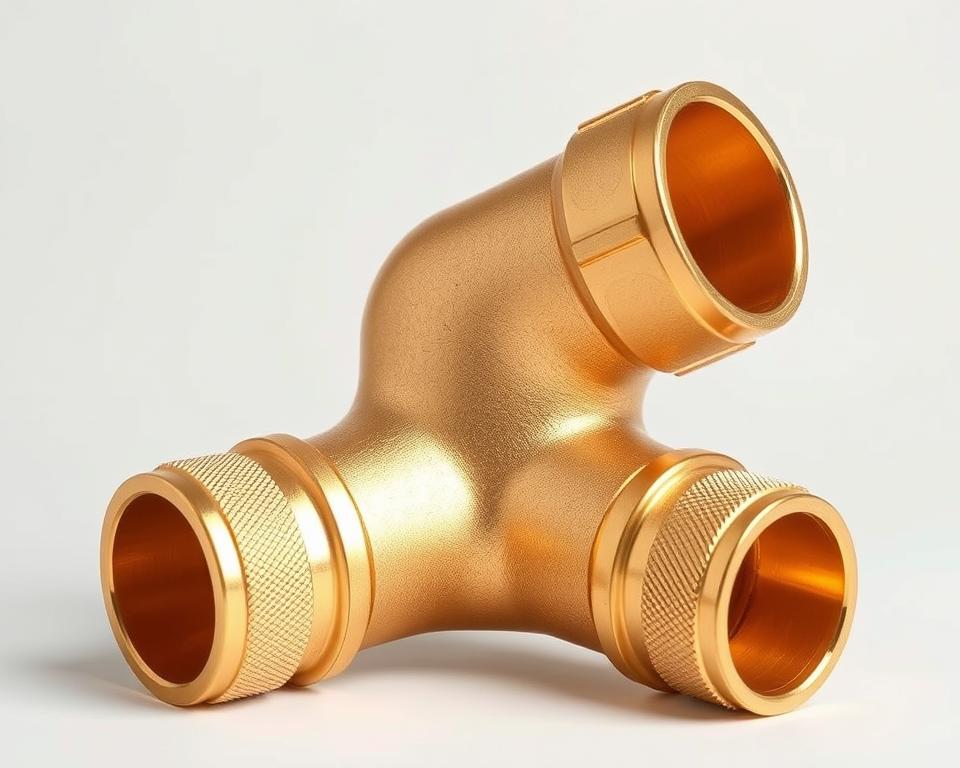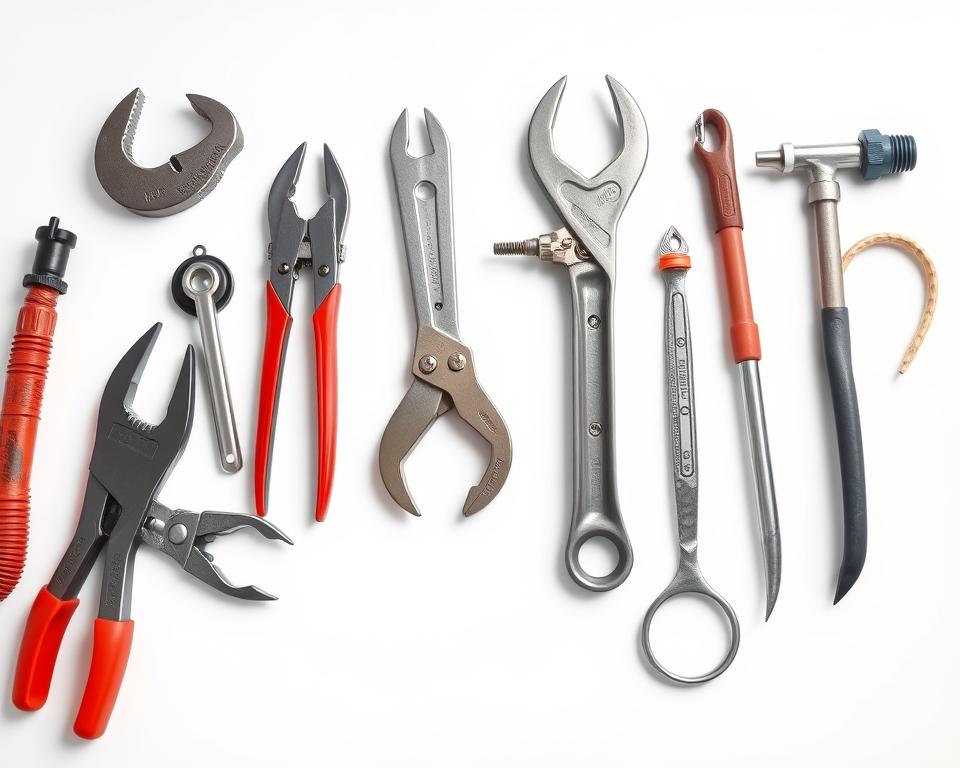Silicone Structural Sealant Guide for Constructors
Did you know that nearly 75% of construction experts rely on silicone framework sealants for efficient weatherproof construction? These high-performance sealants are not just a trend; they have become indispensable in modern construction projects for their exceptional durability and strength against environmental factors.
Silicone framework sealants provide robust bonding and increased suitability with a wide range of substances. This makes them the preferred option for constructors focused on longevity and reduced upkeep. Their effectiveness in multiple applications, particularly in structural joints and window sealing, demonstrates how these construction sealants have a vital role in improving the performance and safety of structures.
Introduction to Silicone Framework Adhesives
Silicone framework sealants are a crucial innovation in building and building. They provide robust adhesion and flexibility, making them vital in contemporary architecture. In contrast to conventional sealants, silicone sealants feature enduring elasticity. This is important in areas prone to movement or expansion.
The development of framework window adhesives has been a revolutionary. These adhesives are essential for multiple applications, both interior and exterior structures. They guarantee integrity in varied construction projects. With a history spanning years, glass adhesive are now essential for safety and appearance in building design.
Builders and designers rely on silicone adhesives for their efficiency and flexibility. They are used in window sealing and bonding exterior connections, providing a dependable option for contemporary building. As we explore into the types and features of silicone sealants, it’s clear they play a crucial role in construction methods.
Varieties of Silicone Sealants
For constructors and contractors, it’s vital to comprehend the various categories of silicone adhesives. The primary categories are neutral rubber adhesive and reactive silicone sealant. Each category has unique features that affect their use, making it essential to choose the appropriate one for a venture.
Neutral Rubber Adhesive
Neutral silicone sealant is the go-to for sensitive applications. It doesn’t emit solvents that could cause corrosion or damaging interactions with different materials. This makes it ideal for framework window sealing, especially in bonding panes. Builders often select this adhesive for working with metals and other sensitive substances.
Acid Silicone Sealant
Reactive rubber adhesive is ideal for ventures with robust substances. It dries quickly, making it great for sealing spaces quickly. It’s used in both residential and business environments where speed and durability are important. Contractors value its versatility, but caution is needed when using it with substances that are sensitive to chemicals.
Key Properties of Silicone Structural Sealant
Silicone framework sealants shine in building due to their standout features. They offer strong bonding, strong weather resistance, and unmatched durability. These qualities are essential for builders looking for a dependable sealant for various applications.
Bonding and Suitability
Top-notch structural sealants bond strongly to substrates like panes, metal, and concrete. This flexibility is important for projects needing a strong bond across various materials. Constructors appreciate this sealant for its capacity to ensure a strong connection, enhancing the structure’s integrity.
Weather Resistance
Designed to endure severe environments, weatherproof silicone sealant stands up to UV rays, moisture, and harsh weather. Such strength ensures it continues to work well over time. It’s an perfect choice for ventures subjected to the weather or those in areas with changing temperatures.
Longevity and Performance
One of silicone sealants’ key qualities is their durability. They are engineered to last, even with building shifts. This elasticity and durability make them a top choice for projects needing to adapt and last, guaranteeing consistent performance over their duration.
| Property | Description | Benefits |
|---|---|---|
| Bonding | High adhesive capability to multiple materials | Ensures building cohesion and dependability |
| Weatherproofing | Protection from ultraviolet light, humidity, and weather fluctuations | Enhances longevity and prevents seal failure |
| Durability | Ability to withstand building shifts | Offers a durable and efficient seal |
Applications for Rubber Sealant in Building
Rubber sealants are essential in construction, especially in framework window sealing uses. They bond building components like glass panes, facades, and window systems, guaranteeing both strength and beauty. A top-quality rubber adhesive not only creates a robust connection but also moves with building materials, preserving the seal through natural shifts.
Silicone products are also important in forming weather-resistant barriers, enhancing buildings’ durability against severe conditions. This is crucial for the durability and security of buildings. Here are some significant fields of application:
- Joining dissimilar substances, such as panes to alloys or concrete.
- Forming bonds in curtain wall systems, enhancing energy efficiency.
- Offering water-resistant solutions for roofing and cladding uses.
- Enabling expansion and shrinkage in moving buildings.
- Ensuring aesthetic design coherence in different building designs.
The distinctive blend of flexibility, longevity, and weatherproofing makes top-quality rubber adhesives ideal for modern construction requirements. As constructors look for innovative options, silicone adhesive is increasingly used, leading safer and better building practices.
| Application | Description | Benefits |
|---|---|---|
| Framework Window Sealing | Bonding glass panels to framing systems | Improved aesthetics, robust bond, elastic movement |
| Waterproofing | Protecting roofs and siding from humidity | Water resistance, improved durability, energy efficiency |
| Bonding Dissimilar Materials | Bonding materials like alloys and glass | Versatility in material compatibility, robust bonding |
How to Choose the Appropriate Rubber Framework Adhesive
Choosing the right silicone structural sealant demands a thorough analysis of substrate types and environmental conditions. It’s essential to comprehend how different substances interact with different sealing agents. This knowledge is crucial for choosing a top-quality rubber adhesive that can endure particular pressures.
Considerations for Various Materials
When selecting rubber adhesive, various materials demand distinct methods. Below is a chart detailing common substrates and their corresponding considerations:
| Material Type | Suggested Adhesive | Key Considerations |
|---|---|---|
| Cement | Professional-grade silicone sealant | Adhesion properties and drying period |
| Glass | Non-reactive rubber adhesive | High transparency and ultraviolet protection |
| Metal | Silicone joint sealant | Rust protection and elasticity |
| Timber | Mixed rubber adhesive | Moisture resistance and movement capability |
Environmental Conditions
The surroundings greatly affects the selection of adhesive. Conditions such as temperature extremes, moisture conditions, and chemical exposure are important. An ideal sealant should keep performance across varying conditions.
- Temperature: Ensure the sealant can withstand the exact temperature range.
- Moisture: Choose sealants impervious to moisture for wet areas.
- Chemical Contact: If the region will be exposed to chemical substances, select a adhesive with suitable resistance.
For the best results, always refer to manufacturer specifications and conduct suitability checks with materials. This approach reduces risk and guarantees longevity for all projects involving a silicone structural sealant.
Correct Installation Techniques
Mastering the skill of sealant production installation is essential for its efficiency. The outcome hinges on the thoroughness of surface preparation and the application methods employed. These preliminary stages set the stage for a effective sealant installation.
Surface Preparation
Surface preparation is the foundation of effective rubber framework adhesive installation. It’s imperative that substrates are thoroughly cleaned, dehydrated, and devoid of any contaminants. The essential procedures for surface preparation are:
- Washing: Dust, grease, and remnants must be eliminated. The selection of detergent should match the substrate kind.
- Priming: A primer may be required, depending on the sealant and substrate, to bolster bonding.
- Drying: Total dehydration of the surface is essential before applying the adhesive, as humidity can weaken its efficiency.
Sealant Application Methods
Opting for the right adhesive techniques is vital for superior outcomes. The technique employed should match with the venture’s requirements and the wanted result. Popular techniques include:
- Caulking Gun: This technique is preferred for its accuracy in controlling sealant width.
- Spatula Use: Ideal for larger areas or when a thick sealant layer is required.
- Spacer Insertion: Crucial in thicker gaps, this method regulates adhesive thickness and improves adhesion.
Sticking to these application methods is vital to avoid air entrapment, which can reduce from the bond’s strength. Carefulness in both substrate cleaning and use ensures a seal that is both long-lasting and efficient, supporting the lasting achievement of construction projects.
Quality Assurance in Sealant Usage
Ensuring the standard of adhesive application is crucial for meeting efficiency goals. Efficient verification techniques help builders and contractors verify the cohesion of their projects. This involves detailed bond strength verification under various conditions to determine if the adhesive sticks effectively with the substrates it touches.
Testing for Adhesion
Testing sealant adhesion is crucial for evaluating rubber adhesives. Techniques used include:
- Pull-off tests – a typical technique to evaluate the adhesive capacity between the adhesive and the surface.
- Peel tests – useful for checking how well the adhesive sticks over time.
- Real-world assessments – real-world checks that ensure the adhesive works as intended in actual conditions.
These methods, included in the quality assurance process, build trust in the sealant’s adhesive strength and its suitability for a project.
Recording and Warranty Considerations
Recording is key in ensuring sealant quality. It includes recording the products utilized, how they were applied, and the conditions at the time of application. Thorough records help in later upkeep and protect all parties. Warranty considerations are crucial, offering protection against defects and outlining the responsibilities of manufacturers and applicators. Adhering to recording methods lowers risks from adhesives that don’t achieve standards.
| Documentation Type | Description |
|---|---|
| Application Notes | Details on the application process, covering environment and methods employed. |
| Safety Information | Details on the protection and usage of sealants used in the venture. |
| Guarantee Papers | Conditions and conditions defining protection against failures and deficiencies. |
Maintaining precise info throughout the process is essential for adhesive standard. Efficient verification and detailed recording support robust warranty considerations, resulting in successful outcomes.
Frequent Errors to Avoid with Rubber Adhesives
Many constructors encounter problems with silicone sealants that can greatly impact their projects. It’s essential to fix these errors for a enduring and efficient bond. Here are some typical issues to be aware of:
- Improper Surface Preparation: Not cleaning and readying surfaces correctly can lead in poor bonding. Consistently remove particles, oils, or contaminants before using the adhesive.
- Selecting the Incorrect Adhesive: Different ventures need specific sealants. Using an reactive rubber in a place where a neutral one is needed can result in inferior efficiency.
- Incorrect Adhesive Methods: Using adhesive unevenly can form weak spots. A steady hand and uniform application during application are crucial for a solid bond.
- Overlooking Surrounding Factors: Adhesives perform optimally within specific heat and moisture levels. Using them in severe situations can lower their efficiency.
- Overlooking Drying Periods: Rushing the drying period can result in partial bonding. Consistently adhere to the recommended curing times for the optimal outcome.
Identifying and addressing these rubber adhesive errors ensures improved efficiency and longevity in construction projects. Adopting these measures can result in successful installations and reduce the requirement for future repairs.
| Mistake | Effect | Solution |
|---|---|---|
| Incorrect Substrate Cleaning | Poor adhesion leading to seal failure | Thoroughly clean and ready substrates before use |
| Selecting the Incorrect Adhesive | Inadequate performance in particular conditions | Choose a adhesive compatible with the use |
| Incorrect Adhesive Methods | Vulnerable areas in the bond, chance of breaks | Practice consistent and uniform adhesive techniques |
| Ignoring Environmental Conditions | Compromised seal integrity | Verify temperature and moisture before use |
| Overlooking Drying Periods | Chance of early breaks | Adhere to the recommended curing times |
Upkeep of Silicone Structural Sealants
Guaranteeing the durability and performance of rubber framework adhesives is crucial. Regular upkeep can prevent fungus development, fading, and adhesive breakdown. This preventive approach not only maintains the building’s appearance but also extends the sealant’s lifespan.
Key practices for effective upkeep are:
- Routine Checks: Check for indications of wear, breaks, or bubbling every few periods.
- Cleanliness: Keep the region around the adhesives tidy. Dirt accumulation can cause mold and discoloration.
- New Application: Prompt reapplication is essential when sealants indicate of deterioration to maintain cohesion.
- Surrounding Factors: Be aware of shifting environments and their impact on bond efficiency.
Implementing these steps can greatly lower potential problems, improving the building strength of structures using silicone-based products. This commitment to upkeep ensures a dependable and efficient adhesive for structures.
Environmental Impact of Rubber Adhesives
The ecological effects of sealants, particularly silicone sealants, has seen a surge in focus. This heightened attention originates from the requirement to match building practices with sustainability. The manufacture of these adhesives often involves chemical emissions, which contaminate the atmosphere and impact internal conditions.
As the construction sector shifts towards sustainable materials, producers are creating in silicone sealants. They seek to reduce VOC outputs and create green formulas. These innovations not only cut down on carbon emissions but also align with sustainable construction goals.
Disposal of silicone sealants poses environmental hurdles. In contrast to some alternatives, silicone is hard to recycle, resulting in more garbage. Users and builders should seek out materials marked as environmentally responsible or backed by reuse programs.
| Factor | Traditional Rubber Adhesives | Eco-Friendly Rubber Adhesives |
|---|---|---|
| Chemical Outputs | Higher emissions | Lower emissions |
| Waste Management | Hard to reuse | Designed for easier recycling |
| Formulation | Traditional ingredients | Green ingredients |
| Compliance with Standards | Varies widely | Meets green building standards |
In the future, builders and designers should favor rubber adhesives with lower environmental impacts. Choosing these sustainable choices can significantly lower damage to our planet. At the same time, they still provide the durability and performance required in building ventures.
Comparing Silicone Sealants to Other Adhesives
Understanding the differences between acidic sealant and other adhesive kinds is crucial for creating informed choices in construction. This overview will focus on two primary contrasts: silicone vs. acrylic sealants and rubber vs. synthetic adhesives. Each has unique functions in bonding uses, determined greatly by their properties and use cases.
Rubber vs. Plastic Adhesives
Silicone sealants shine in elasticity and weather resistance, making them ideal for applications exposed to harsh environmental conditions. Acrylic sealants, while simpler to paint and typically lower in cost, may not offer the same level of durability over time. Key distinctions are:
- Weatherproofing: Silicone is more effective in harsh weather and humidity.
- Elasticity: Silicone can expand and shrink with structural movements, while plastic is prone to breaking.
- Adhesion: Silicone adheres effectively to a range of substrates, whereas plastic can be restricted.
Silicone vs. Polyurethane Sealants
In the comparison of silicone vs. polyurethane sealants, both provide great adhesion. Synthetic adhesives might have a stronger bond to many substrates but often are lacking when subjected to extreme conditions. Important factors to consider include:
- Adhesion Strength: Polyurethane can bond incredibly well on different substrates.
- Weatherproofing: Silicone tends to outperform polyurethane in intense weather situations.
- Application: Polyurethane usually demands more precise blending and use than silicone.
Each type of sealant has its strengths and weaknesses, defining their fit across various projects. Making an educated decision relies on comprehending these comparisons when choosing between silicone and other adhesives.
Upcoming Developments in Silicone Sealant Development
The rubber adhesive industry is witnessing major changes, driven by the need for modern construction options. Innovations in sealant formulations are boosting longevity while reducing ecological effects. This shift is driven by growing awareness of eco-friendliness, resulting in the development of efficient, green sealants.
Self-healing sealants are a revolutionary innovation in this area. These materials can on their own repair small breaks, significantly prolonging their life and cutting down on substitutions. This meets the increasing demand for durable building materials.
Builders encounter the challenge of handling with temperature fluctuations. In answer, manufacturers are creating highly flexible silicone formulations. These adhesives are engineered to withstand changing environmental factors without losing efficiency. They are ideal for diverse construction projects.
The sector is also moving towards eco-friendly, performance-focused adhesive options. Builders and architects now seek products that satisfy their needs and promote green methods. This shift underscores the important function of continuous research and development in the industry.
- Self-healing capabilities
- Enhanced flexibility for weather changes
- Lower ecological effects
- Performance-driven formulations
Summary and Closing Remarks on Silicone Structural Sealant
Silicone structural sealants are crucial in the building sector, providing many benefits that improve both efficiency and longevity. They offer excellent adhesive properties and long-lasting seals, improving project durability and resilience against weather conditions.
These sealants also show notable weather resistance and flexibility, making them fit for a wide range of uses. By using high-quality silicone sealants, builders not only support eco-friendly methods but also guarantee their seals endure for long periods, ensuring safety and reliability.
As construction evolves, the application of silicone sealants will likely result in longer-lasting and power-saving options. Adopting these innovations will assist builders provide top-notch results that satisfy modern construction needs while promoting eco-friendly practices.



